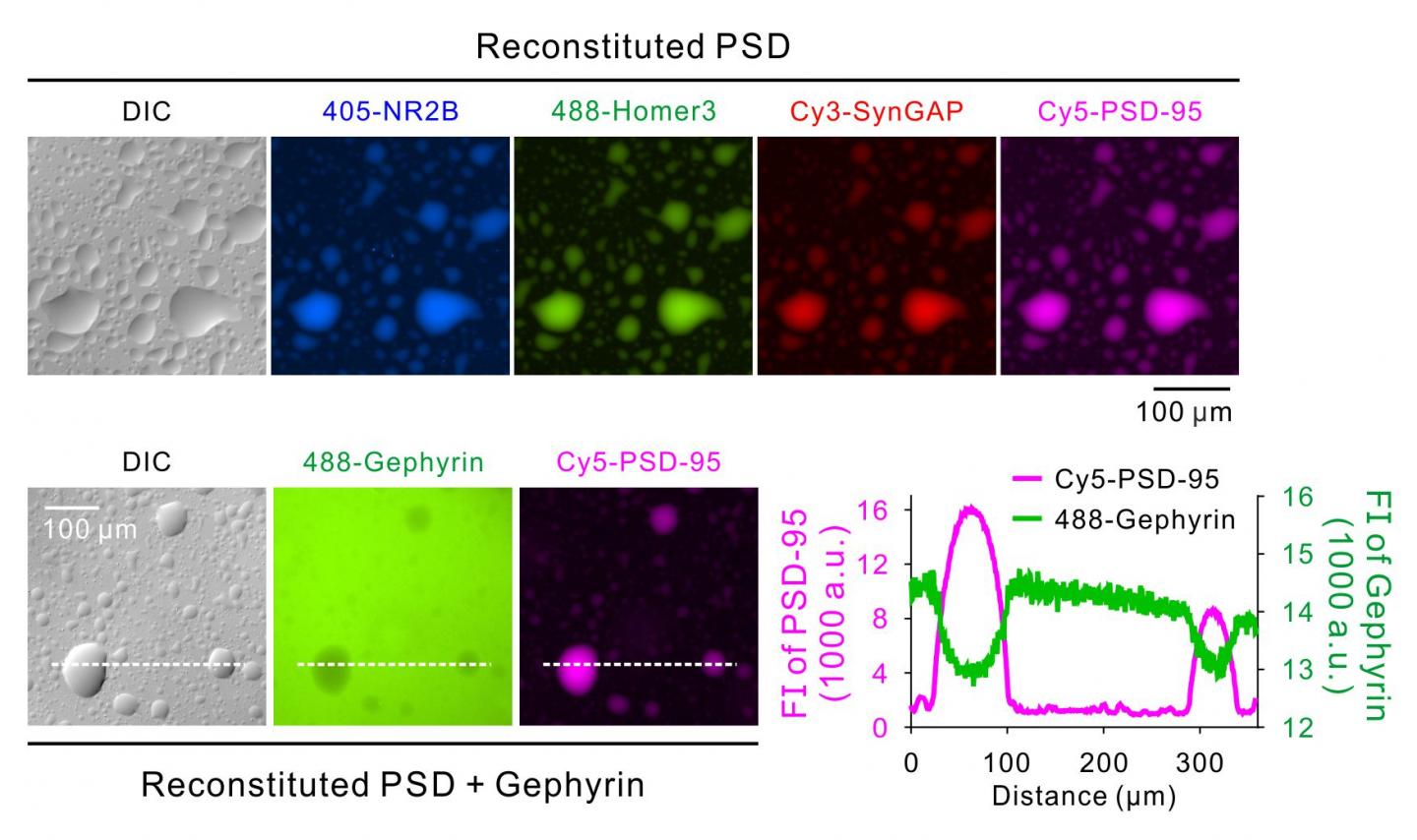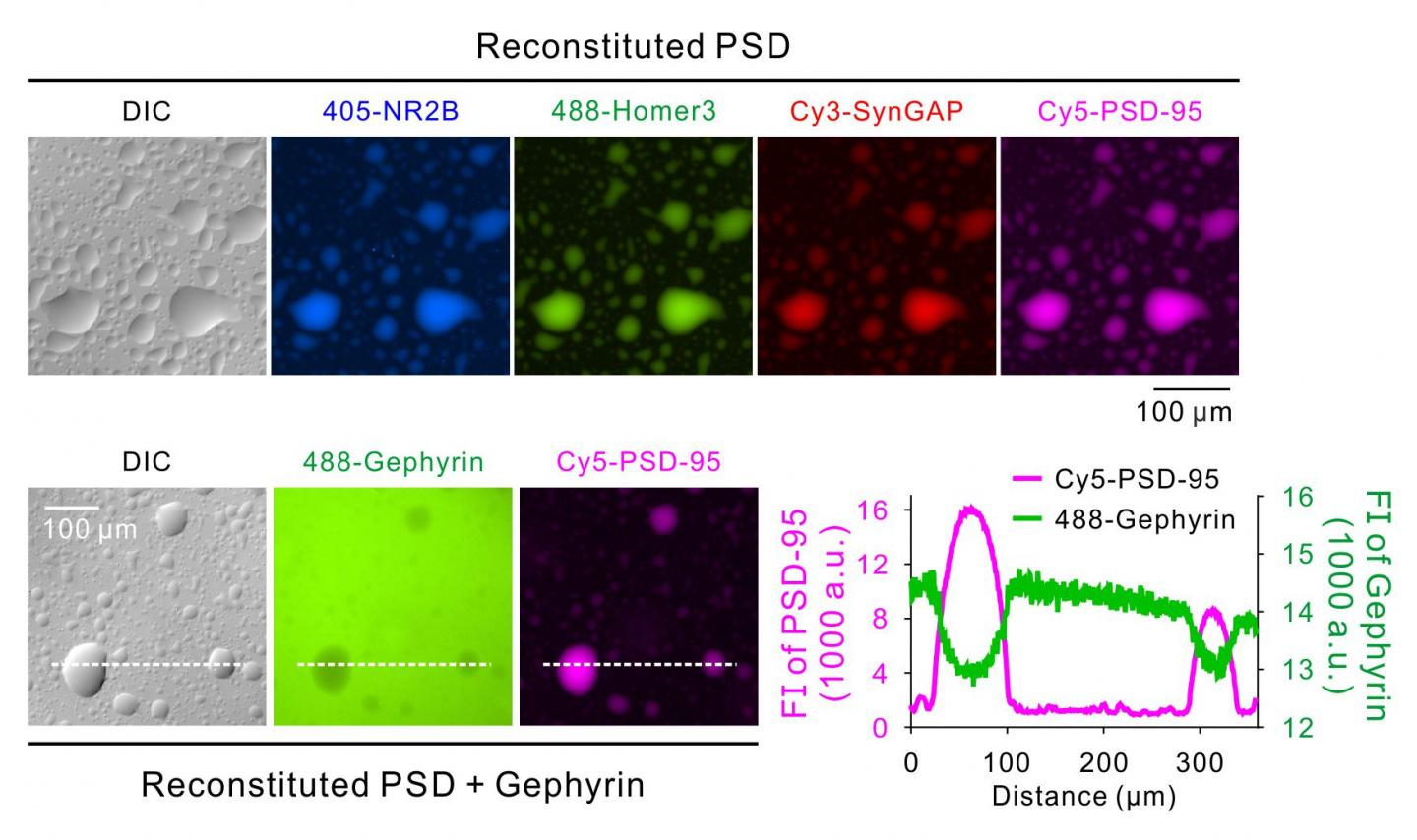
Credit: HKUST
Synapses, the structure that allows neurons to pass signals to one another, are essential to neuronal function. Proper formation and responses to stimulation of synapses both during development and in adulthood are fundamental to mammalian brains, but the molecular basis governing formation and modulation of compartmentalized synaptic assemblies are unclear.
In a recent study, a group of scientists from the Hong Kong University of Science and Technology (HKUST) employed a biochemical reconstitution approach to show that, both in solution and on supported membrane bilayers, multivalent interaction networks formed by major excitatory postsynaptic density (PSD) scaffold proteins led to formation of PSD-like assemblies via phase separation. The reconstituted PSD-like assemblies can cluster receptors, selectively concentrate enzymes, promote actin bundle formation, and expel inhibitory postsynaptic proteins.
The findings were published in the journal Cell on Aug 2, 2018. (doi: https://doi.org/10.1016/j.cell.2018.06.047 )
Synapse, the most basic unit for a neural circuit to form, does not behave as static and linear as connection nodes in computer circuits do. As they are extremely dynamic both within each synapse at a short-time scale and at the entire circuit level at a very long-time range, understanding synapse formation and its dynamic regulation is essential to investigate further on how a specific neural circuit generate certain physiological functions.
"The condensed phase PSD assemblies have features that are distinct from those in homogeneous solutions and fit for synaptic functions," said Prof Mingjie Zhang, lead researcher of the group. "In our study, we have built a molecular platform for understanding how neuronal synapses are formed and dynamically regulated."
"We attempted to understand how highly condensed PSD proteins assemblies not enclosed by membranes can autonomously form and stably exist," said Dr Menglong Zeng, a co-author of the paper. "Such assembled PSD condensates dynamically exchange their constitutes in response to synaptic stimuli."
"In this study, via a biochemical reconstitution approach using purified proteins, we have demonstrated these four major scaffold proteins can indeed form PSD protein condensates at physiological concentrations," said Prof Zhang. "Our results indicate that the highly condensed PSD assemblies in living neurons might autonomously form and stably exist via LLPS. It provides a likely answer to the mechanism of synapse-based cellular compartmentalization of neurons, a striking morphology that is critical for the functions of neurons."
The reconstituted PSD condensates investigated in the study recapture several key functional features of the PSD in living neurons.
First, the PSD condensates can massively cluster glutamate receptors on supported membrane bilayers, and the clustered NMDAR tails still manages to exchange with the diffused receptor tails on the membrane bilayers. Second, the major scaffold proteins are the critical determinants in driving the PSD condensates formation. Such PSD condensates can then enrich their binding enzymes such as SynGAP and CaMKIIα. Third, the PSD condensates formed by the major scaffold proteins can enrich actin regulatory protein and promote actin bundle formation.
"The information derived from such a reconstitution system, together with experiments performed in living neurons, offer valuable insights in understanding roles of these proteins in synaptic formation and functions," said Prof Zhang. "Although still vastly simplified, this well-defined biochemically traceable system provides a platform and a new paradigm for studying excitatory PSD formation and regulation as well as for elucidating mechanisms of a range of brain disorders caused by mutations of synaptic encoding genes in the future.
###
Media Contact
Johnny Tam
[email protected]
852-235-88556
http://www.ust.hk
Original Source
https://www.cell.com/cell/abstract/S0092-8674(18)30850-X http://dx.doi.org/10.1016/j.cell.2018.06.047





